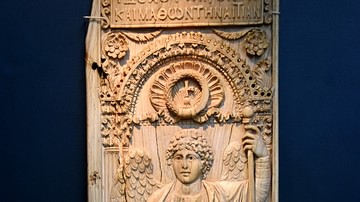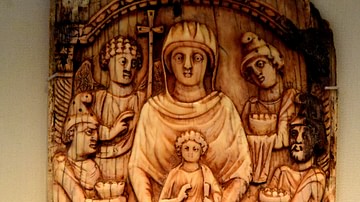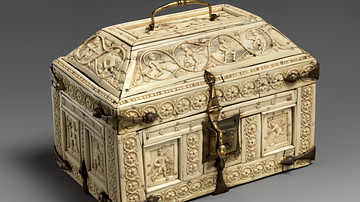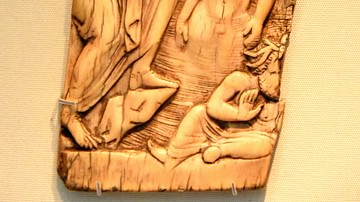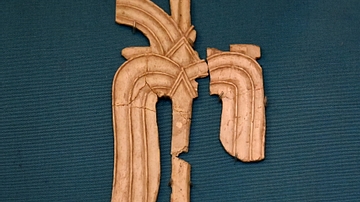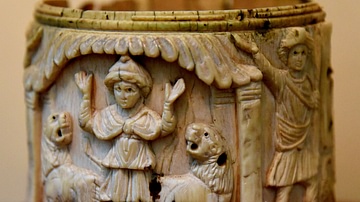Illustration
Diptych (two-part writing tablet), ivory. c. 506 CE. From the collection of the Zurich historian J. H. Hottinger (1620-1667 CE). The man on the throne was called Areobindus. He is shown giving the signal to begin the animal combat depicted on the bottom part of the panels. He used these ivory writing tablets to invite high-ranking officials of the Byzantine Empire to attend the games he was putting on in celebration of his taking office as consul. (Landesmuseum, Zürich).
About the Author
Cite This Work
APA Style
Wiener, J. B. (2018, December 01). Byzantine Diptych of Ivory. World History Encyclopedia. Retrieved from https://www.worldhistory.org/image/9623/byzantine-diptych-of-ivory/
Chicago Style
Wiener, James Blake. "Byzantine Diptych of Ivory." World History Encyclopedia. Last modified December 01, 2018. https://www.worldhistory.org/image/9623/byzantine-diptych-of-ivory/.
MLA Style
Wiener, James Blake. "Byzantine Diptych of Ivory." World History Encyclopedia. World History Encyclopedia, 01 Dec 2018, https://www.worldhistory.org/image/9623/byzantine-diptych-of-ivory/. Web. 09 Jul 2025.



